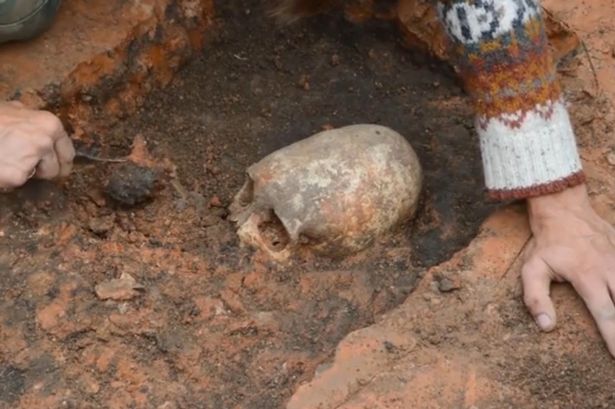
The elongated skull shaped slightly like an egg on an otherwise humanoid form has brought garnered enthusiasm from UFO watchers rushed who insist it's proof that aliens had once visited Earth.
Archaeologists, however, have insisted that the skeleton, which belonged to a female from a 4,000 BC settlement, had a perfectly reasonable explanation for the skull which looks elongated.
They state that the tribe which had lived in Arkaim near the modern-day city of Chelyabinsk in central Russia used to bind the head to make it grow out of shape.
UFO watchers have countered with the claim that if this was the case, it was simply a way of mimicking the skulls of the alien visitors, offering proof of visitation.

Researcher Maria Makurova has confirmed to the Russian news agency TASS: "We have found a well preserved skeleton.
"I would not exclude the possibility that the skeleton belongs to a woman from the Sarmati trible that lived in the territories of what is now modern day Ukraine, Kazakhstan and southern Russia.
"Her skull was elongated because the tribe did so by tying up the heads of their children with rope. It was clearly a tradition in the tribe."
She declined to comment on speculation it was attributed to alien visitors saying that currently they were still working on theories as to why the tribe had the tradition but had nothing fixed yet as a reason.
It is just another of the mysteries of the spectacular site of Arkaim known as Russia's Stonehenge which is believed was built around 4,000 BC along the same lines as the British monument.
Scientists who exposed the photographs of the latest spectacular discovery of the alien-looking humanoid say the body was probably from the second or third century after Christ.
The Akraim archaeological site was discovered in 1987 and appeared to be an important site to study Bronze Age, and since then has yielded spectacular discoveries.
As well as being a primitive astronomical observatory, it was also a village fortified by two large stone circular walls.
The settlement covers an area of some 220,000sq-ft and consists of two circles of dwellings separated by a street, with a central community square in the centre.



Comment: See in addition -
Arkaim: Russia's Stonehenge and a puzzle of the ancient world
Anomalous zones of Russia: Arkaim town